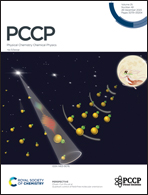The network structure in transient telechelic polymer networks: extension of the Miller–Macosko model†
Abstract
The combination of supramolecular chemistry and polymer science has resulted in the development of transient polymer networks with diverse properties and applications. Specifically, polymer networks based on transient linking of telechelic polymer precursors offer a high degree of control over the network structure, which can reform in response to external stimuli that change the connectivity of transient bonds. Therefore, the combination of the versatile polymer functionality and the adjustable connectivity of transient bonds may result in complex network structures that are not easy to predict or characterize. To address this gap, herein we extend the Miller–Macosko model to forecast the network connectivity of transient telechelic polymer networks made with various polymer functionalities and transient connectivities represented by metal–ligand complexes. This model predicts a universal dependence of the network structure and modulus on preparative parameters including the metal ion identity, characterized by the complexation thermodynamics, and concentration. Moreover, we demonstrate that given the thermodynamic tendency of forming network defects like loops, the model can include such imperfections, enabling rheological properties to be used indirectly for the characterization of defect content. We outline general guidelines to extend the model to more intricate structures, enhancing our understanding of the structure–property relationship in complex transient polymer networks.



 Please wait while we load your content...
Please wait while we load your content...